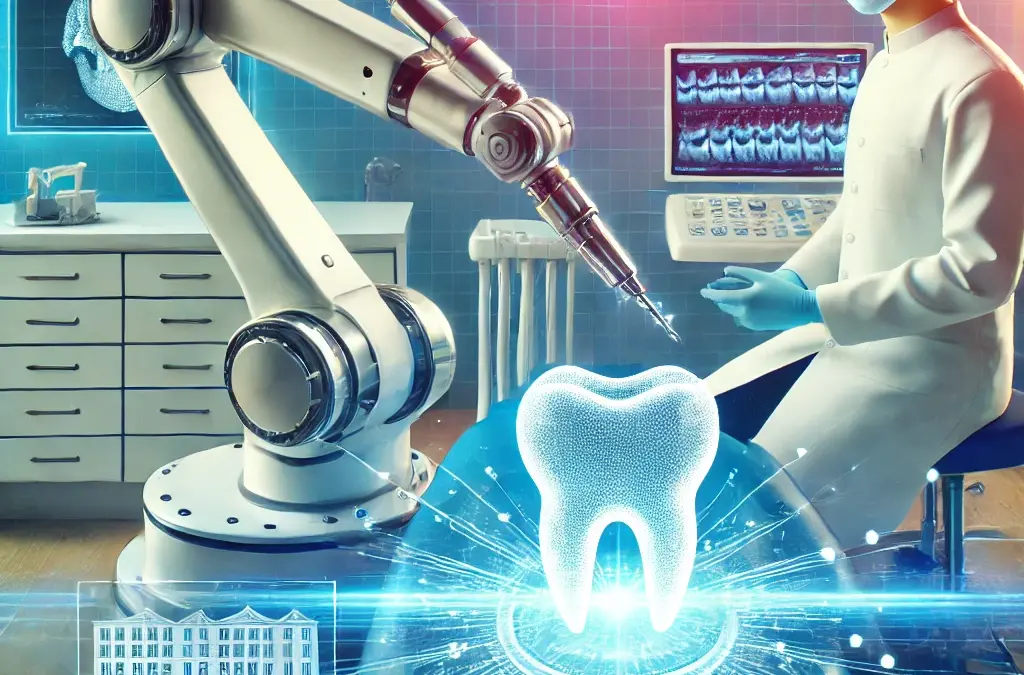In the rapidly evolving field of dentistry, robotic technology is making significant strides. Robotic dental surgeries, once a concept of the future, are now becoming a reality, offering precision, efficiency, and improved patient outcomes. Here, we delve into the latest trends in robotic dental surgeries and explore how these advancements are transforming dental care.
Precision and Accuracy in Robotic Dental Surgeries
One of the most significant advantages of robotic dental surgeries is the unparalleled precision and accuracy they offer. Robots can perform procedures with micrometer precision, reducing the risk of human error. This level of accuracy is particularly beneficial in complex surgeries like dental implants and root canal treatments, where precision is paramount.
Minimally Invasive Robotic Dental Procedures
Robotic technology enables minimally invasive dental procedures, which are less traumatic for patients. These procedures typically involve smaller incisions, resulting in reduced bleeding, less pain, and faster recovery times. Minimally invasive surgeries are particularly advantageous for elderly patients or those with underlying health conditions who may not tolerate traditional surgical methods well.
Enhanced Visualization with Robotic Dental Systems
Robotic systems in dental surgeries are often equipped with advanced imaging technologies, such as 3D imaging and augmented reality. These technologies provide dentists with enhanced visualization of the surgical site, allowing for more precise planning and execution. For example, in implantology, 3D imaging helps in accurately placing implants, avoiding vital structures, and ensuring optimal alignment.
Improved Patient Comfort with Robotic Dentistry
Robotic dental surgeries contribute to improved patient comfort and satisfaction. The precision of robotic systems means that procedures are often quicker and less invasive, leading to a more pleasant experience for patients. Additionally, the use of robots can reduce the need for extensive anesthesia, further enhancing patient comfort.
Training and Education in Robotic Dental Technology
As robotic dental surgeries become more prevalent, there is a growing emphasis on training and education for dental professionals. Specialized training programs and certifications are being developed to ensure that dentists are proficient in using robotic systems. This trend is crucial for the safe and effective implementation of robotic technology in dental practices.
Integration with Artificial Intelligence in Robotic Dentistry
The integration of artificial intelligence (AI) with robotic dental systems is another exciting trend. AI algorithms can assist in diagnosing dental conditions, planning treatments, and even performing certain aspects of the surgery. For instance, AI can analyze patient data to predict outcomes and suggest the best course of action, enhancing the decision-making process for dentists.
Cost and Accessibility of Robotic Dental Surgeries
While robotic dental surgeries offer numerous benefits, cost and accessibility remain challenges. The initial investment in robotic systems can be substantial, making it difficult for smaller practices to adopt this technology. However, as the technology advances and becomes more widespread, costs are expected to decrease, making robotic dental surgeries more accessible to a broader range of patients.
Case Studies and Success Stories in Robotic Dentistry
Several case studies and success stories highlight the effectiveness of robotic dental surgeries. For example, the Yomi robotic system, the first FDA-approved robotic device for dental implant surgeries, has shown promising results in clinical trials. Patients have reported higher satisfaction rates, faster recovery times, and fewer complications compared to traditional methods.
Future Prospects of Robotic Dental Surgeries
The future of robotic dental surgeries looks promising, with ongoing research and development aimed at enhancing the capabilities of robotic systems. Innovations such as nanorobots for targeted drug delivery and tissue regeneration, as well as the integration of virtual reality for remote surgeries, are on the horizon. These advancements hold the potential to revolutionize dental care, making procedures safer, more efficient, and more patient-friendly.
Robotic dental surgeries represent a significant leap forward in the field of dentistry. With their precision, efficiency, and potential to improve patient outcomes, robotic systems are set to play a crucial role in the future of dental care. As technology continues to advance, we can expect even more groundbreaking innovations that will further enhance the quality of dental treatments and patient experiences.
Embracing these trends and staying informed about the latest developments in robotic dental surgeries will be essential for dental professionals looking to provide cutting-edge care to their patients.




